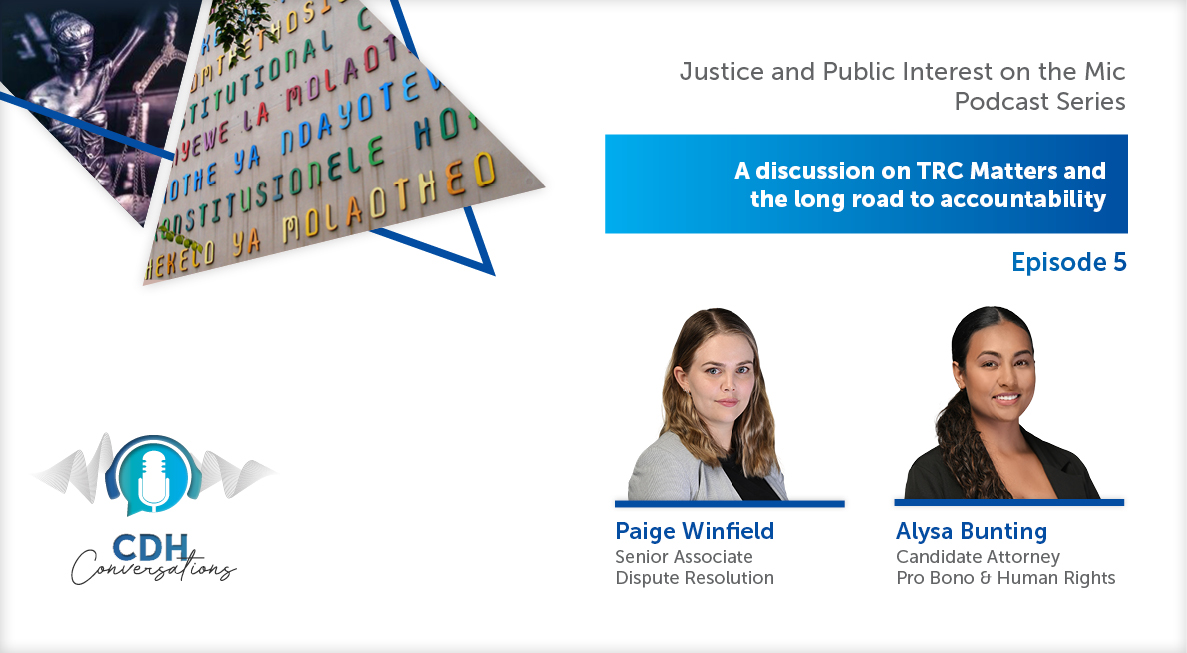A first of sorts: Tax Court considers the GAAR in the context of interlocutory applications
At a glance
- The Tax Court in South Africa considered the application of the general anti-avoidance rules (GAAR) in two separate tax appeals.
- The court examined issues related to striking out certain allegations made by the South African Revenue Service (SARS), determining legal issues separately, and determining which party had the duty to begin leading evidence at the appeal hearings.
- The court held that the introduction of certain words in the statements did not alter the basis of the assessments, rejected the striking-out applications, and ordered the taxpayers to pay SARS' costs.
- Regarding the duty to begin, the court ruled that SARS had the duty to lead evidence first and ordered SARS to pay the taxpayers' costs for those applications.
On 12 November 2020, the Tax Court had to consider the application of some of the provisions of the GAAR in the matter of Mr X v The Commissioner for the South African Revenue Service (Case No IT24502) and Mr Y v The Commissioner for the South African Revenue Service (Case No IT24503) (as yet unreported). As indicated in the judgment, the matter involves the combined hearing of two separate tax appeals by Mr X and Mr Y. In short, the Tax Court had to consider the following three issues, which were applicable to both tax appeals:
- Whether certain allegations made by the Commissioner for the South African Revenue Service (SARS) in its Rule 31 statements filed in the tax appeals, should be struck out;
- Whether certain legal issues arising on the pleadings should be determined separately; and
- Whether SARS or the taxpayers had the duty to begin leading evidence at the appeal hearing(s) on the merits of the respective tax appeals.
The judgment is lengthy, mainly due to the complexity of the facts that form the subject matter of the tax appeals. The Tax Court’s finding regarding the separation issue (second bullet above) was an ancillary issue to the first issue and is therefore not discussed in any detail. We do not provide a detailed exposition of the facts, but only set out those facts that are relevant to understand the Tax Court’s decision on the three issues referred to above.
Facts
Mr X application
- On 26 October 2015, SARS dispatched to Mr X a notice of audit letter informing him that an audit would be conducted into his 2006 to 2012 years of assessment.
- On 30 October 2015, SARS issued a letter incorporating both its audit findings and a section 80J notice, indicating its intentions to invoke the GAAR in raising the additional assessment (80J Notice).
- In the 80J Notice, SARS alleged that Mr X was, pursuant to preliminary audit findings, involved in certain arrangements which, despite them being reportable, were not disclosed.
- The transactions alleged to constitute impermissible avoidance arrangements involve agreements concluded between various South African companies, including A Investments and various companies in the Isle of Man. More specifically, these arrangements are said to consist of the following:
- The transactions between A Investments, its subsidiaries and the Isle of Man companies;
- The declaration of certain A Investments promissory notes to Mr X;
- The ‘settlement’ of the promissory notes held by X via A Investments becoming obliged to pay those parties the net income from specific transactions involving specific A Investments subsidiaries; and
- In each case following a sale by A Investments, the payment by A Investments of amounts to Mr X.
- SARS further alleged that each arrangement involving the steps listed above is a separate arrangement for purposes of the GAAR, consisting of a set of preconceived transactions which, together, constitute a “scheme”.
- Mr X responded to the Section 80J Notice on 22 January 2016 by saying, amongst other things, that he was unable to submit reasons why SARS should not invoke the GAAR against him as the 80J Notice was too vague, generalised, and in some places, contradictory.
- Following further correspondence between the parties, SARS raised the additional assessments on 30 August 2016 in terms of the GAAR.
- Mr X objected against the assessments, which objection was disallowed, following which Mr X appealed against the assessments to the Tax Court.
- SARS filed its Rule 31 statement as required. Mr X brought a striking-out application in terms of which it argued that SARS sought to broaden its case in the Rule 31 statement by including significant averments that did not form part of the assessment. It was alleged that this was not permitted.
- Mr X also argued that the inclusion of these averments in the Rule 31 statement was an attempt to remedy certain shortcomings which were already identified by Mr X in his objection.
- On the basis that SARS had allegedly pleaded in its Rule 31 statement a basis for exercising its powers under the GAAR that differs from the basis set out in the 80J Notice and finalisation of audit letter, Mr X argued that certain paragraphs in the Rule 31 statement should be struck out.
- Stated differently, the argument was that the broadening of SARS’ case as suggested by the taxpayer, amounted to a novation of the whole of the factual basis of the disputed assessment, under rule 31(3) of the rules (Tax Court Rules). The Tax Court Rules were promulgated under section 103 of the Tax Administration Act 28 of 2011.
Mr Y application
The facts involving Mr Y’s application are similar to the facts in Mr X’s application.
- On 26 October 2015, Mr Y received a notice of audit letter from SARS informing him that an audit would be conducted in his 2006 to 2012 years of assessment.
- On 30 October 2015, SARS issued a letter incorporating both its audit findings and the section 80J notice, indicating amongst other things that the Commissioner intended to invoke the GAAR to raise an additional assessment (Second 80J Notice).
- Similar to Mr X’s application, Mr Y responded to the Second 80J Notice that he was unable to advance reasons why SARS should not invoke the GAAR as the Second 80J Notice was, amongst other things, too vague, generalised, in places contradictory and overall unclear to him.
- As was the case with Mr X, further correspondence was exchanged and SARS ultimately issued an additional assessment to Mr Y, which he objected and subsequently appealed against to the Tax Court.
- Similar to Mr X’s application, the Second 80J notice identified three different structures affected by the transactions. These are “the S structure”, “the T structure” and “the 2012 structure”.
- The Second 80J Notice states, amongst other things, the following: “For the purpose of this analysis, the arrangement or arrangements consist/s of the following:
- The transactions between A Investments, its subsidiaries and the Isle of Man companies, giving rise to certain A Investments subsidiaries holding promissory notes issued by A Investments:
- The declaration of certain A Investments promissory notes to J and X;
- The “settlement” of the promissory notes held by J and X via A Investments becoming obliged to pay those parties the net income from specific transactions involving specific A Investments subsidiaries;
- In each case following a sale by A Investments the payment by A Investments of amounts to J and X; and
- In the specific case of the payments to J, the declaration of dividends by J to its shareholder trusts funded by those payments.
- Each arrangement involving the steps listed above is a separate arrangement for the purpose of the GAAR, consisting of a set of preconceived transactions, which, together, constitute a “scheme”.”
- Mr Y brought an application on a similar basis to Mr X’s application and argued that certain paragraphs in the Rule 31 statement filed in Mr Y’s case (Second Rule 31 Statement) should be struck out.
- The transactions between A Investments, its subsidiaries and the Isle of Man companies, giving rise to certain A Investments subsidiaries holding promissory notes issued by A Investments:
On the other hand, SARS brought an application in terms of rule 51(2) of the Tax Court Rules, against Mr X and Mr Y, seeking the Tax Court to declare that in each appeal, the taxpayers must first adduce evidence at the hearing of the appeals. This is disputed by both taxpayers.
Judgment on the striking-out applications
Interpretation of the new GAAR
The Tax Court held that to determine the merits of the striking-out applications, one had to consider SARS’ powers under the GAAR and in this analysis, it was useful to compare the old GAAR provisions as contained in section 103(1) of the Act to the new GAAR provisions. The Tax Court held that when one considers the old GAAR, the basic jurisdictional requirement for the exercise of the powers under that section is that SARS must be “satisfied” of various requirements in section 103(1).
Under the new GAAR contained in sections 80A to 80L of the Act, the requirement that SARS must be satisfied has been specifically excluded. However, the Tax Court explained that the substantive trigger for the exercise of, or parts of the new GAAR, arises where SARS forms an opinion that there is an impermissible avoidance arrangement. For an impermissible avoidance arrangement to exist, the following four requirements must be met:
First, there must be an “arrangement” as defined in section 80L of the Act;
- Second, the arrangement must result in a tax benefit. If the arrangement results in a tax benefit, then it constitutes an “avoidance arrangement”;
- Third, the “avoidance arrangement” must have characteristics of abnormality and/or lack commercial substance as set out in section 80C and 80D; and
- Fourth, the “avoidance arrangement” must have had as its “sole” or “main purpose” the obtaining of a “tax benefit”.
The Tax Court held that to interpret the GAAR, one must adopt the well-known approach set out in Natal Joint Municipal Pension Fund v Endumeni Municipality 2012(4) SA 593 SCA. Pursuant to this, the Tax Court noted that it is clear from the provisions of the new GAAR that the legislature intended a departure from the provisions of the old GAAR, and to this end, specifically excluded as a jurisdictional requirement that SARS must be “satisfied”. The Tax Court held that the judgments relied on by counsel for Mr X and Mr Y, regarding the interpretation of the old GAAR, are not applicable in the present circumstances. An interpretation of the new GAAR sections through the prism of the old GAAR may well have the effect of negating the very purpose of the new sections and the underlying mischief they were intended to address in the first place.
In light of this interpretive approach, the Tax Court considered whether SARS is, under the new GAAR, permitted to amplify or change the basis of the determination without issuing a fresh assessment. Specifically, this issue revolved around the interpretation of section 80J(4) of the Act. This section states that if at any stage after issuing a notice in terms of section 80J(1), additional information comes to SARS’ knowledge, it may revise or modify its reasons for applying the GAAR or, if the notice has been withdrawn give notice in terms of section 80J(1). The Tax Court noted that section 80J(4), as relied on by counsel for Mr X and Mr Y, would only be applicable if there is a jurisdictional fact that is satisfied, namely that additional information must have come to SARS’ knowledge.
Application of the law to the facts
The first issue to consider was whether the introduction of certain words in the Rule 31 statements fundamentally altered what was pleaded regarding the impugned “arrangements” or “arrangement” in Mr X’s case (80J Notice and finalisation of audit letter) and in Mr Y’s case (Second 80J Notice and finalisation of audit letter). The Tax Court held that the introduction of these words did not alter the basis of the assessment in each case.
The second issue to consider was the argument on behalf of Mr Y, that SARS did not allege the receipt of any tax benefit by Mr Y himself in the Second 80J Notice and finalisation of audit letter. On this issue, the Tax Court referred to the fact that, amongst other things, the Second 80J Notice stated that each arrangement factually resulted in a tax benefit for J’s shareholder, whereas it is undisputed that the TT Trust is a shareholder of J and Mr Y is a trustee and beneficiary of the TT Trust. The Tax Court noted SARS’ allegation in the Second 80J Notice that the TT Trust and J are “connected persons” and that the TT Trust and Mr Y are connected persons. It accepted that SARS treated the TT Trust, J and Mr Y as one and the same person, which is permissible in terms of section 80F of the Act. As such, the Tax Court held that there was no novation of SARS’ case in the Second Rule 31 Statement regarding this issue.
Pursuant to the above discussion, the Tax Court rejected both striking-out applications and ordered that the taxpayers pay SARS’ costs in respect of these applications.
Judgment regarding the duty to begin
In answering this question, the Tax Court indicated that one must first consider Rule 44(1) of the Tax Court Rules, which states that at the hearing of a tax appeal, the proceedings are commenced by the appellant unless –
- the only issue in dispute is whether an estimate under section 95 of the TAA on which the disputed assessment is based, is reasonable or the facts on which an understatement penalty is imposed by SARS under section 221(1); or
- SARS takes a point in limine.
While the court held that the cases regarding the interpretation of the old GAAR were not relevant in interpreting the new GAAR provisions, in the context of interpreting the procedural aspect of onus, these cases could be considered. The court then proceeded to consider rule 39 of the Uniform Rules of Court, which states that the duty to begin follows from the onus of proof.
The Tax Court held that the question regarding the duty to begin must be determined with reference to who bears the onus to prove the four requirements for an “impermissible avoidance arrangement” as alluded to above. In other words, if SARS relies on the existence of an “avoidance arrangement”, it bears the onus of proving it. As the existence of an “avoidance arrangement” is in dispute, SARS must commence leading evidence.
The Tax Court ultimately found that SARS bore the duty lead evidence first and ordered SARS to pay the taxpayers’ costs in respect of those applications.
The information and material published on this website is provided for general purposes only and does not constitute legal advice. We make every effort to ensure that the content is updated regularly and to offer the most current and accurate information. Please consult one of our lawyers on any specific legal problem or matter. We accept no responsibility for any loss or damage, whether direct or consequential, which may arise from reliance on the information contained in these pages. Please refer to our full terms and conditions. Copyright © 2025 Cliffe Dekker Hofmeyr. All rights reserved. For permission to reproduce an article or publication, please contact us cliffedekkerhofmeyr@cdhlegal.com.
Subscribe
We support our clients’ strategic and operational needs by offering innovative, integrated and high quality thought leadership. To stay up to date on the latest legal developments that may potentially impact your business, subscribe to our alerts, seminar and webinar invitations.
Subscribe




